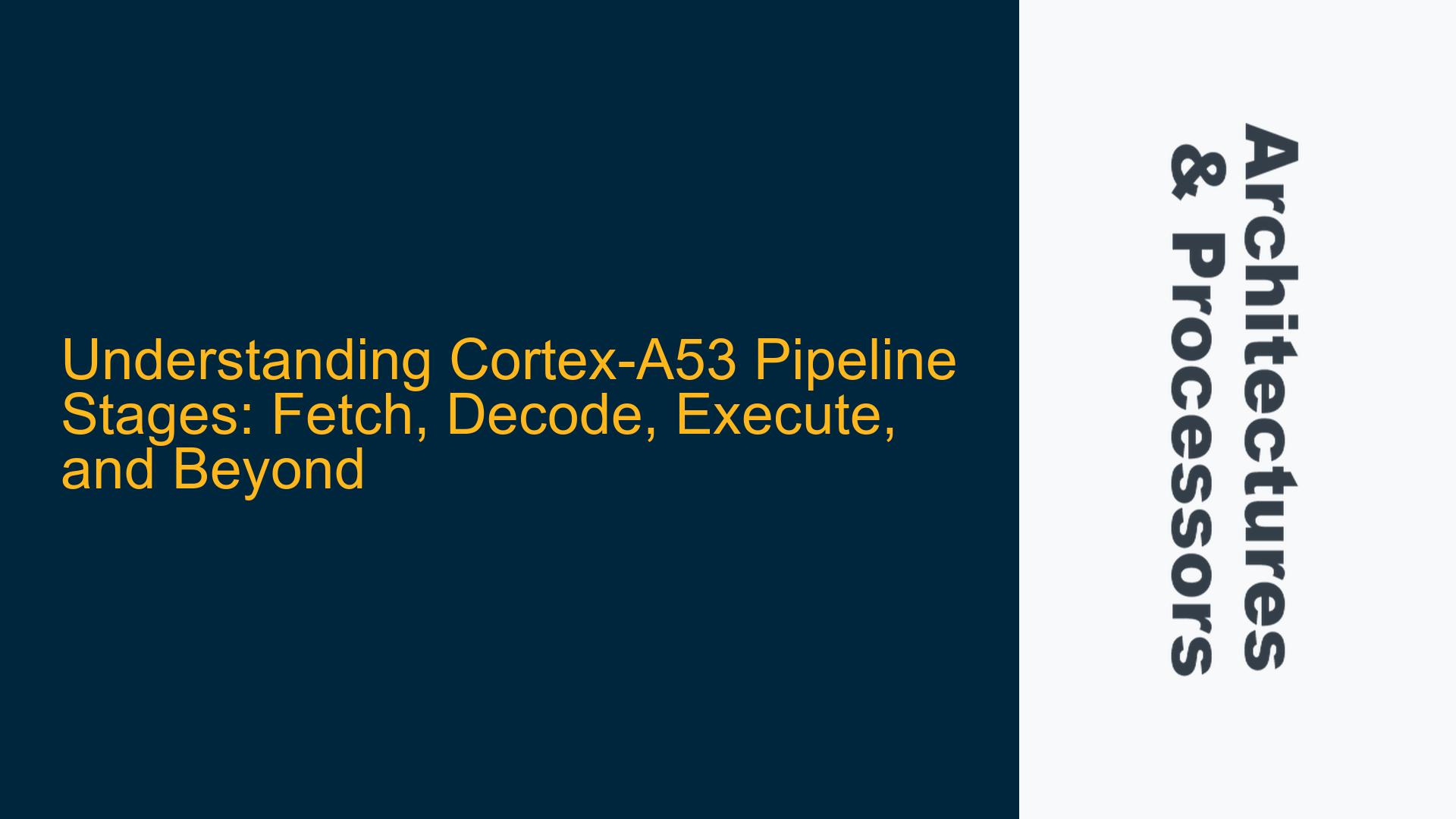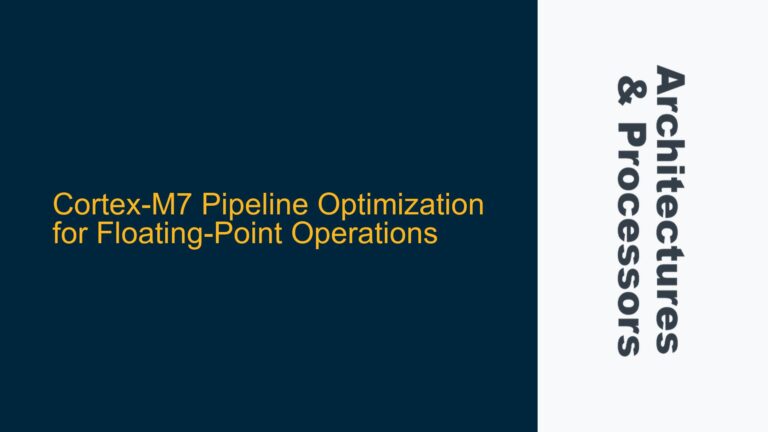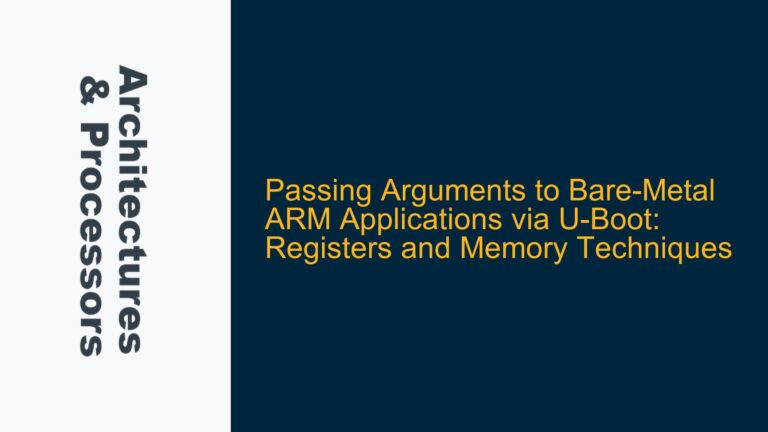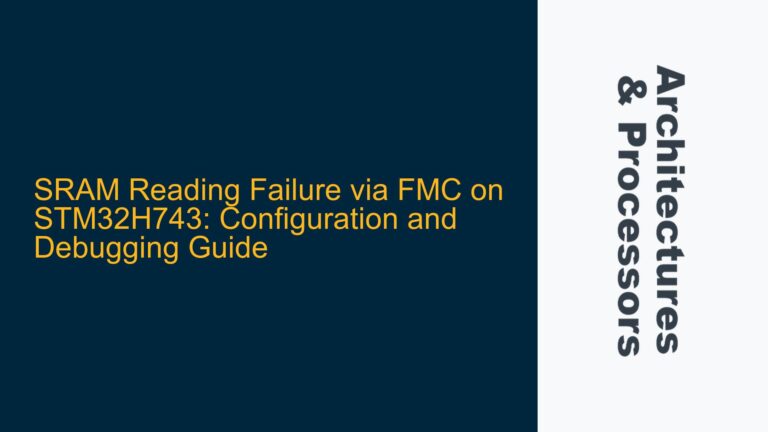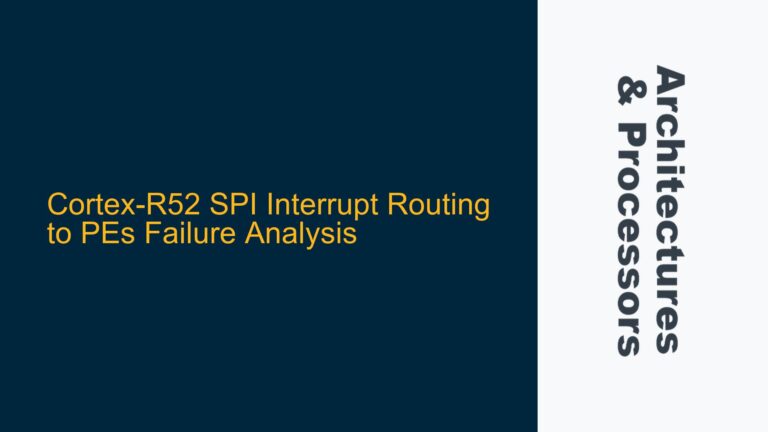Cortex-A53 Pipeline Architecture and Stage Breakdown
The Cortex-A53 processor, a member of ARM’s Cortex-A series, is designed with an 8-stage pipeline to balance performance and power efficiency. The pipeline stages are meticulously crafted to handle instruction processing with minimal stalls and maximum throughput. Each stage has a specific role in the instruction execution process, and understanding these stages is crucial for optimizing software and diagnosing performance bottlenecks.
The Cortex-A53 pipeline can be broadly divided into three phases: Front-End, Execution, and Back-End. The Front-End is responsible for fetching and decoding instructions, the Execution phase handles the actual computation, and the Back-End manages memory access and write-back operations. Below is a detailed breakdown of the 8 pipeline stages:
-
Fetch Stage 1 (F1): The first stage of the pipeline is responsible for fetching instructions from the instruction cache (I-cache) or memory. The program counter (PC) is used to determine the address of the next instruction to be fetched. The Cortex-A53 employs branch prediction to minimize stalls caused by control flow changes.
-
Fetch Stage 2 (F2): In this stage, the fetched instructions are aligned and prepared for decoding. The Cortex-A53 can fetch up to two instructions per cycle, depending on the alignment and availability of instructions in the I-cache.
-
Decode Stage 1 (D1): The first decode stage begins the process of translating the fetched instructions into micro-operations (µOps). This stage identifies the instruction type and prepares it for further decoding.
-
Decode Stage 2 (D2): The second decode stage completes the translation of instructions into µOps. The Cortex-A53 uses a dual-issue pipeline, meaning it can decode and issue up to two instructions per cycle to the execution units.
-
Issue Stage (IS): The issue stage is responsible for dispatching the decoded µOps to the appropriate execution units. The Cortex-A53 has multiple execution units, including integer ALUs, floating-point units, and load/store units. The issue stage ensures that dependencies are resolved and that instructions are issued in the correct order.
-
Execute Stage 1 (E1): The first execute stage performs the actual computation or operation specified by the instruction. This stage includes arithmetic logic unit (ALU) operations, address generation for memory access, and other computational tasks.
-
Execute Stage 2 (E2): The second execute stage completes any remaining computation and prepares the results for write-back. For memory operations, this stage includes data cache (D-cache) access and alignment.
-
Write-Back Stage (WB): The final stage of the pipeline writes the results of the executed instructions back to the register file or memory. This stage ensures that the architectural state of the processor is updated correctly.
The Cortex-A53 pipeline is designed to handle a wide range of workloads efficiently. However, understanding the intricacies of each stage is essential for diagnosing performance issues and optimizing software for this architecture.
Common Performance Bottlenecks in Cortex-A53 Pipeline Stages
The Cortex-A53 pipeline is highly optimized, but certain scenarios can lead to performance bottlenecks. These bottlenecks can arise from various sources, including instruction fetch delays, decode stalls, execution unit contention, and memory access latency. Below are some of the most common causes of pipeline stalls and performance degradation in the Cortex-A53:
-
Instruction Cache Misses: The Cortex-A53 relies heavily on its instruction cache (I-cache) to fetch instructions quickly. However, if the required instructions are not present in the I-cache, the processor must fetch them from memory, leading to significant delays. This is particularly problematic in applications with large code footprints or poor locality of reference.
-
Branch Misprediction: The Cortex-A53 uses branch prediction to minimize the impact of control flow changes on pipeline performance. However, if a branch is mispredicted, the pipeline must be flushed, and the correct instructions must be fetched, leading to a pipeline bubble and wasted cycles.
-
Data Cache Misses: Similar to instruction cache misses, data cache (D-cache) misses can cause significant delays in the pipeline. The Cortex-A53 must wait for the required data to be fetched from memory, which can stall the execution stage and reduce overall throughput.
-
Execution Unit Contention: The Cortex-A53 has multiple execution units, but certain instructions may compete for the same resources. For example, if multiple instructions require the use of the floating-point unit (FPU), they may be serialized, leading to stalls in the execution stage.
-
Memory Access Latency: The Cortex-A53’s load/store units are responsible for accessing memory, but memory access latency can vary significantly depending on the memory hierarchy and the state of the cache. High latency memory accesses can stall the pipeline and reduce performance.
-
Pipeline Hazards: Pipeline hazards, such as data dependencies and structural hazards, can cause stalls in the Cortex-A53 pipeline. Data dependencies occur when an instruction depends on the result of a previous instruction that has not yet completed. Structural hazards occur when multiple instructions require the same hardware resource simultaneously.
-
Micro-Architectural Stalls: The Cortex-A53’s micro-architecture includes various mechanisms to optimize performance, but these mechanisms can sometimes introduce stalls. For example, the processor may stall while waiting for a resource to become available or while resolving complex dependencies.
Understanding these potential bottlenecks is crucial for diagnosing performance issues in the Cortex-A53 pipeline. By identifying the root cause of a bottleneck, developers can implement targeted optimizations to improve performance.
Optimizing Cortex-A53 Pipeline Performance: Techniques and Best Practices
Optimizing the performance of the Cortex-A53 pipeline requires a deep understanding of the architecture and the specific workload being executed. Below are some techniques and best practices for optimizing pipeline performance:
-
Minimizing Instruction Cache Misses: To reduce instruction cache misses, developers should focus on improving code locality and reducing the code footprint. Techniques such as function inlining, loop unrolling, and code alignment can help improve I-cache hit rates. Additionally, using smaller, more efficient instruction encodings can reduce the pressure on the I-cache.
-
Improving Branch Prediction Accuracy: Accurate branch prediction is critical for maintaining pipeline throughput. Developers can improve branch prediction accuracy by using predictable control flow patterns and avoiding complex conditional logic. Additionally, using compiler optimizations such as profile-guided optimization (PGO) can help the compiler generate code that is more amenable to branch prediction.
-
Reducing Data Cache Misses: To minimize data cache misses, developers should focus on improving data locality and reducing the working set size. Techniques such as data prefetching, cache blocking, and data structure optimization can help improve D-cache hit rates. Additionally, using non-temporal stores for data that is not expected to be reused can reduce cache pollution.
-
Balancing Execution Unit Utilization: To avoid execution unit contention, developers should strive to balance the workload across the available execution units. This can be achieved by using a mix of integer, floating-point, and memory operations that do not compete for the same resources. Additionally, using SIMD (Single Instruction, Multiple Data) instructions can help maximize the utilization of the execution units.
-
Optimizing Memory Access Patterns: To reduce memory access latency, developers should focus on optimizing memory access patterns. Techniques such as memory coalescing, data alignment, and using cache-friendly data structures can help improve memory access performance. Additionally, using DMA (Direct Memory Access) for large data transfers can offload the CPU and reduce memory access contention.
-
Resolving Pipeline Hazards: To minimize pipeline hazards, developers should focus on reducing data dependencies and avoiding structural hazards. Techniques such as instruction scheduling, register renaming, and out-of-order execution can help reduce the impact of data dependencies. Additionally, using compiler optimizations such as loop unrolling and software pipelining can help reduce structural hazards.
-
Leveraging Micro-Architectural Features: The Cortex-A53 includes various micro-architectural features that can be leveraged to improve performance. For example, using the processor’s power management features can help reduce power consumption and improve thermal performance. Additionally, using the processor’s performance monitoring units (PMUs) can help identify and diagnose performance bottlenecks.
By implementing these techniques and best practices, developers can optimize the performance of the Cortex-A53 pipeline and achieve better overall system performance. It is important to note that optimization is often an iterative process, and developers should continuously profile and analyze their code to identify new opportunities for improvement.
In conclusion, the Cortex-A53 pipeline is a highly optimized and efficient architecture, but understanding its intricacies is essential for diagnosing performance issues and implementing effective optimizations. By focusing on minimizing cache misses, improving branch prediction accuracy, balancing execution unit utilization, and optimizing memory access patterns, developers can unlock the full potential of the Cortex-A53 processor.
